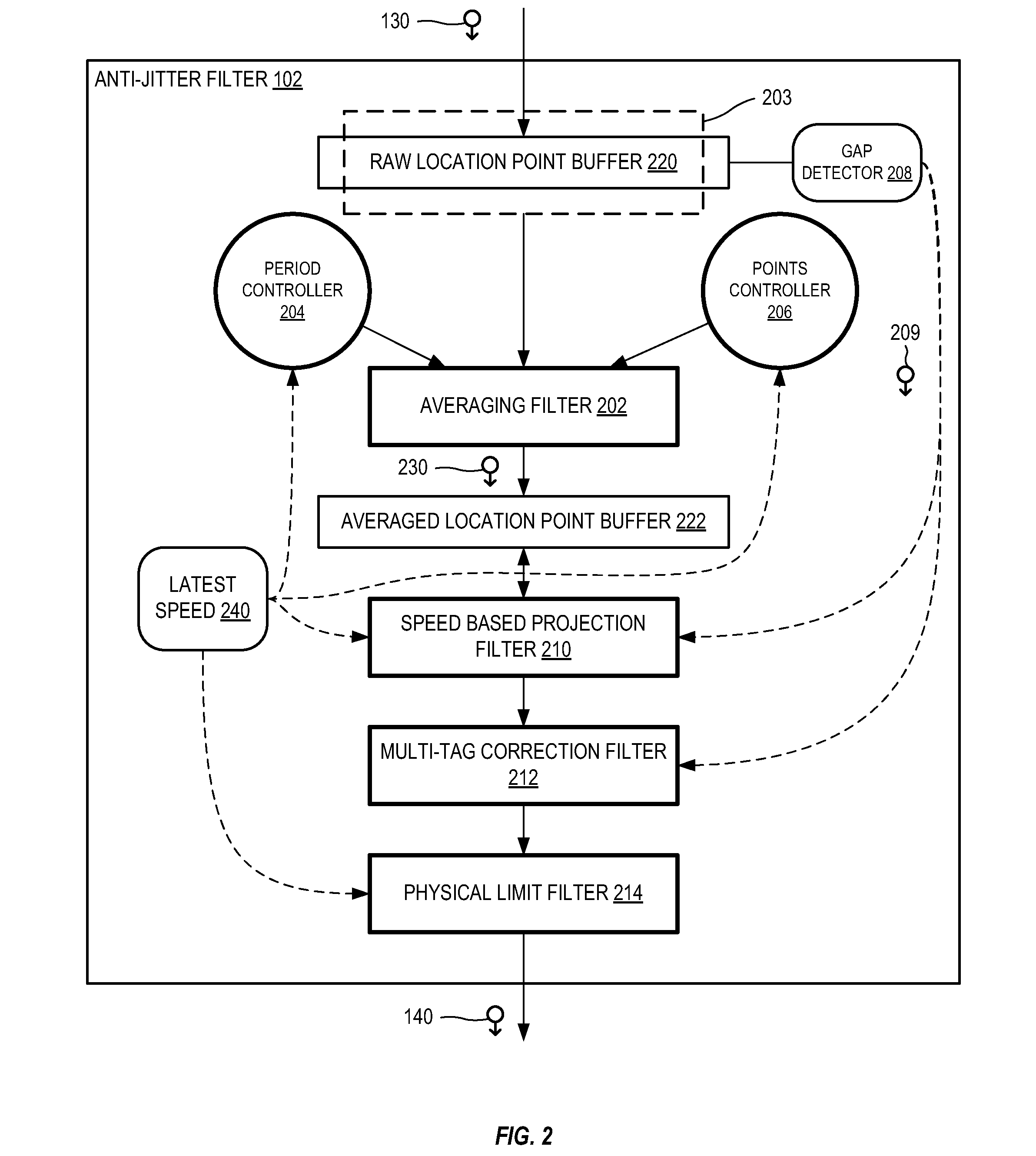System and method for object tracking anti-jitter filtering
a technology of object tracking and filtering method, applied in the field of system and method for object tracking anti-jitter filtering, can solve the problems of sudden jump, loss of responsiveness, and introduction of unwanted artifacts to the graphical display based on the location data, so as to improve the quality and accuracy of location data, improve the quality aspect, and improve the effect of object tracking and graphical display representation
- Summary
- Abstract
- Description
- Claims
- Application Information
AI Technical Summary
Benefits of technology
Problems solved by technology
Method used
Image
Examples
Embodiment Construction
[0031]In the following examples, the rate (e.g., 25 hz) of determining raw location points and the rate (e.g., 10 hz) of determined average location points are exemplary and other rates may be used without departing from the scope hereof. In particular, rates, speed thresholds, adjustments, and timeouts are selected based upon the objects being tracked and the application for which the tracking information is provided. Further, although simple averaging of raw location points is illustrated, other processing of raw location points may be applied without departing from the scope hereof. For example, one or more of weighted averaging, linear interpolation, piecewise interpolation, polynomial interpolation, and curve fitting, or other projection techniques may be used to process raw location points.
[0032]FIG. 1 shows one exemplary object tracking anti-jitter filter 102 employed within an object tracking system 104 that tracks movement of objects 120 within an operational field 122. At ...
PUM
 Login to View More
Login to View More Abstract
Description
Claims
Application Information
 Login to View More
Login to View More - R&D
- Intellectual Property
- Life Sciences
- Materials
- Tech Scout
- Unparalleled Data Quality
- Higher Quality Content
- 60% Fewer Hallucinations
Browse by: Latest US Patents, China's latest patents, Technical Efficacy Thesaurus, Application Domain, Technology Topic, Popular Technical Reports.
© 2025 PatSnap. All rights reserved.Legal|Privacy policy|Modern Slavery Act Transparency Statement|Sitemap|About US| Contact US: help@patsnap.com



